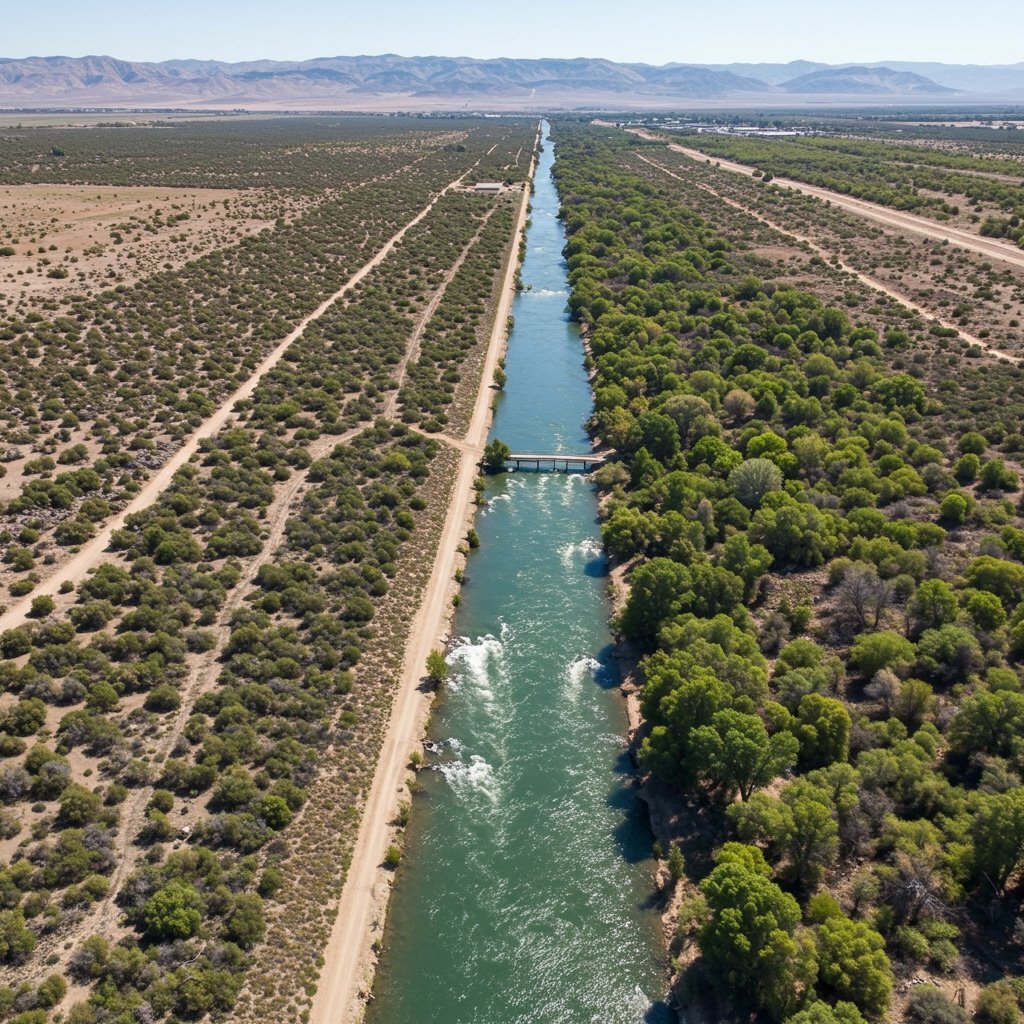Colorado River Basin States Fail to Secure Post-2026 Water Accord
DENVER, CO – A critical round of negotiations aimed at establishing new rules for managing the parched Colorado River beyond 2026 concluded on April 24, 2025, in Denver without a breakthrough agreement. Representatives from the seven Colorado River basin states – including California, Arizona, and Nevada – wrapped up intense discussions mediated by officials from the U.S. Bureau of Reclamation, but failed to finalize a long-term plan for water sharing amidst the region’s ongoing, historic drought.
The failure to reach a consensus marks a significant setback in the urgent effort to create a sustainable framework for the river system, which provides water to approximately 40 million people and irrigates millions of acres of farmland across the Western United States. The current operating guidelines for the river expire at the end of 2026, necessitating a new accord to govern water allocations, particularly from the system’s two largest reservoirs, Lake Mead and Lake Powell. Both reservoirs have plummeted to historically low levels, raising serious concerns about hydropower generation, ecosystem health, and the reliability of water deliveries to farms and cities.
Pressure Mounts Amidst Unprecedented Scarcity
The negotiations in Denver were seen as a crucial opportunity to bridge divides between the Upper Basin states (Colorado, Utah, Wyoming, New Mexico) and the Lower Basin states (California, Arizona, Nevada), which have historically faced different challenges and held divergent views on allocation priorities, particularly during periods of extreme scarcity. The U.S. Bureau of Reclamation has been actively mediating these talks, pressing the states to develop mutually agreeable solutions rather than relying solely on federal mandates.
The Bureau had hoped this round of talks would yield concrete proposals for new drought contingency plans and operational rules for Lake Mead and Lake Powell, plans that would dictate how water cuts are implemented as reservoir levels continue to fall. However, sources close to the negotiations indicated that significant gaps remain between the states’ positions, particularly concerning the volume of water states should contribute to conservation efforts and the mechanisms for sharing shortages.
California Voices Disappointment, Warns of Agricultural Cuts
The outcome of the Denver talks was met with disappointment, particularly from officials representing California, the basin’s largest water user. Representatives from the state’s key water agencies, including the Imperial Irrigation District (IID) – which holds the most senior water rights on the river and serves vast agricultural areas in Southern California – and the Metropolitan Water District of Southern California (MWD), the major municipal water supplier for the Los Angeles metropolitan area, expressed their concerns following the failed negotiation.
Both IID and MWD officials underscored the instability that the lack of a post-2026 agreement introduces into the system. They warned that the continued uncertainty regarding future water availability and delivery rules could necessitate deeper, more severe cuts to agricultural users in California’s Central Valley. While the Imperial Irrigation District’s senior rights offer some protection, other agricultural users with more junior water rights could face significant reductions starting as early as next year, in 2026, potentially impacting crop yields, farm economics, and the regional agricultural sector.
“We came to Denver hoping for substantive progress and a clear path forward,” stated one California representative who wished to remain anonymous due to the sensitivity of the talks. “The failure to reach an agreement leaves the system vulnerable and creates immense anxiety for water users, especially our agricultural partners in the Central Valley who are already grappling with reduced supplies.”
The Metropolitan Water District echoed this sentiment, emphasizing that stable, predictable water supplies are essential not only for agriculture but also for urban centers across Southern California. The lack of a long-term deal complicates planning and investment in water conservation and infrastructure projects.
Path Forward Remains Uncertain
Despite the impasse in Denver, the states and the Bureau of Reclamation remain committed to finding a resolution, albeit under increasing pressure. Further talks are tentatively scheduled for late May in Phoenix, Arizona. This next meeting is expected to be crucial, as the window for reaching a voluntary, state-driven agreement is narrowing.
Should the states fail to agree on a framework in the coming months, the U.S. Bureau of Reclamation has the authority to impose its own operating rules for the river system post-2026. While the Bureau prefers a negotiated settlement, citing it as more durable and adaptable, the urgency of the situation – driven by persistently low reservoir levels – may force federal intervention if state-led efforts continue to falter.
The stakes for the Phoenix meeting are exceptionally high. A failure there could escalate tensions between the states and increase the likelihood of unilateral federal action or even prolonged legal disputes over water rights and allocations. For California, particularly its agricultural economy in the Central Valley, the outcome will directly influence the availability and cost of water in the years to come. The pressure is undeniably mounting on all parties involved to find common ground and avert a crisis in the management of one of the most vital water resources in the American West.








